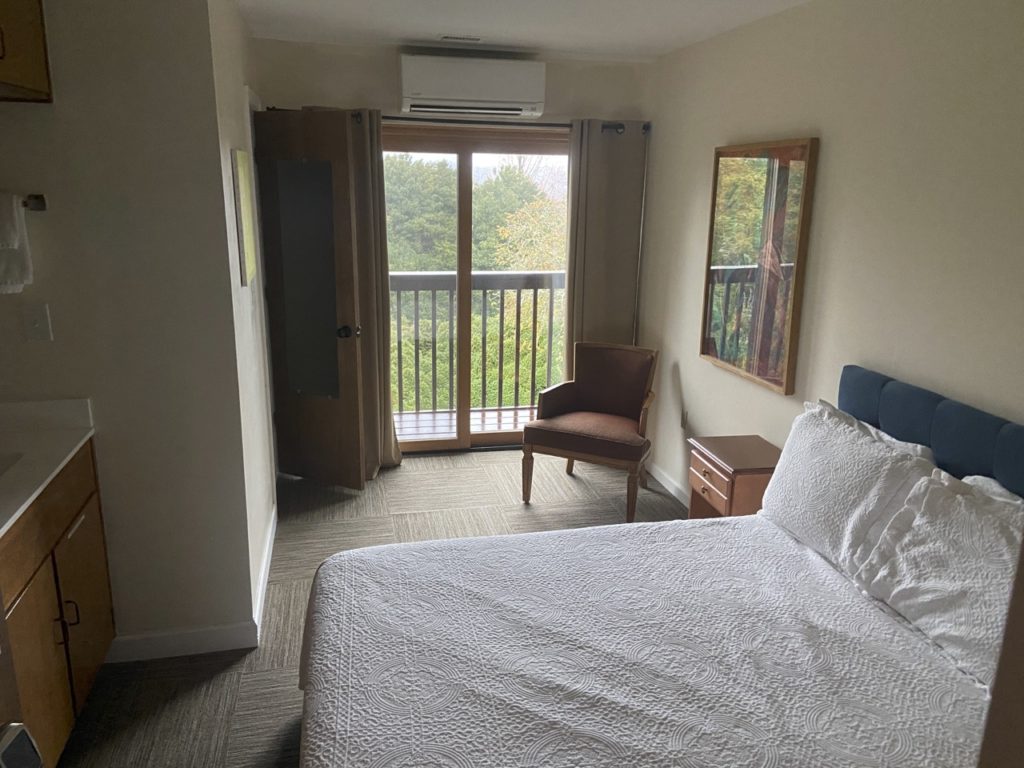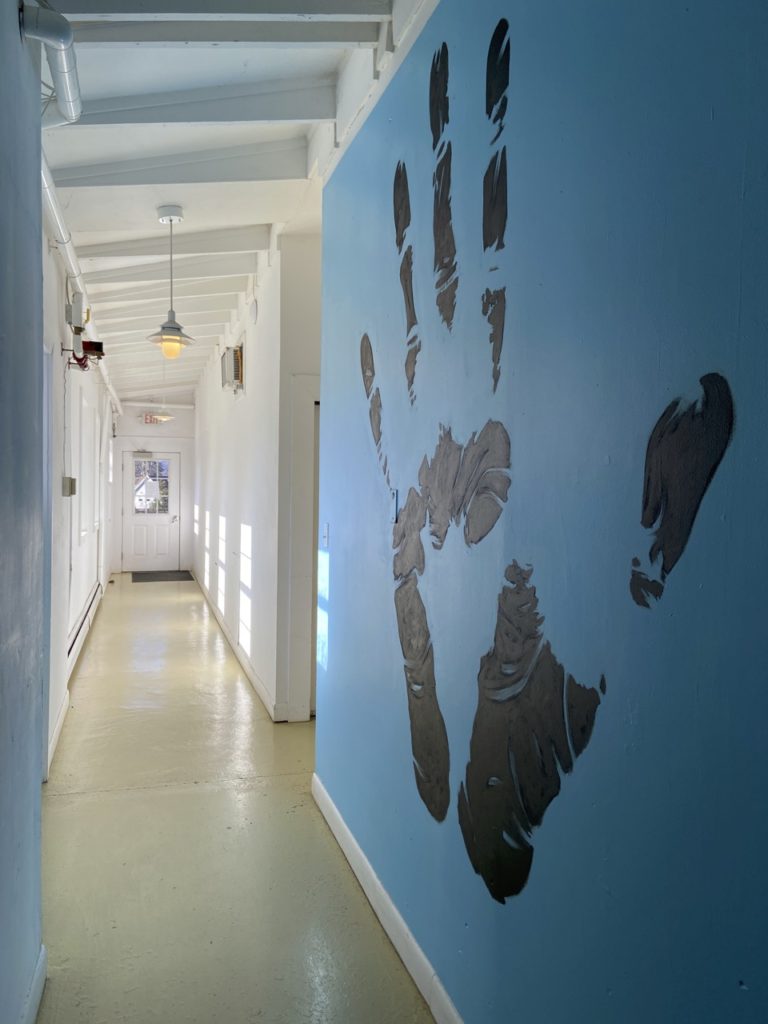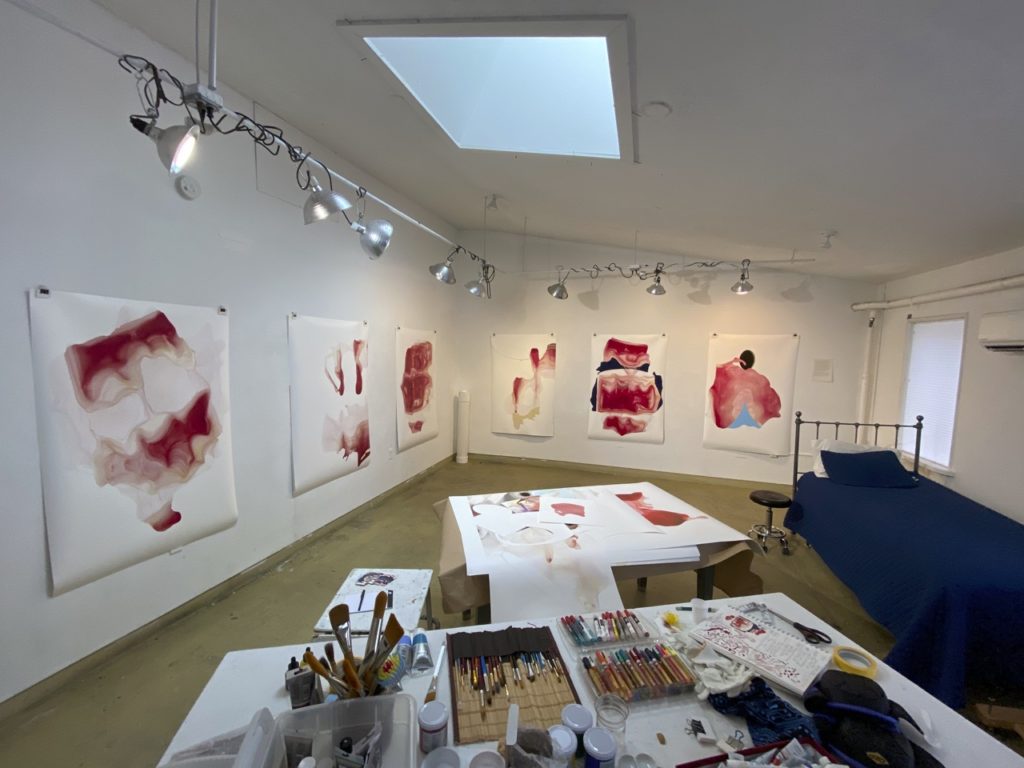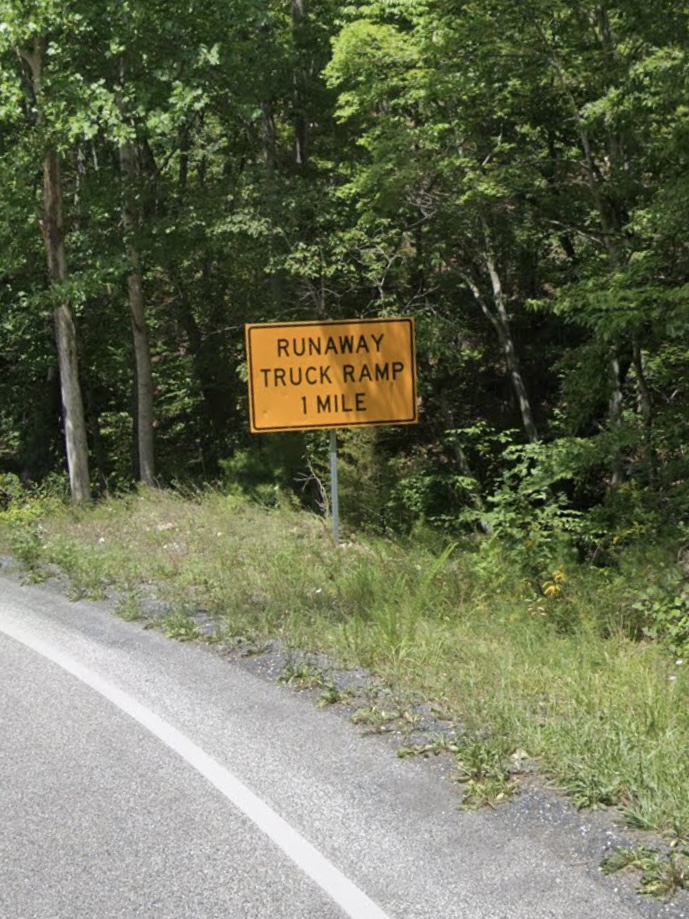Driving to the Virginia Center for the Creative Arts in March was so different than my usual summer residency journeys. Instead of the burning sun on my left arm and the AC turned to max, I felt the fresh air and early spring changes in the landscape. I drove across the Midwest and stayed with a friend in Ohio (coincidentally, we met at another residency), and then continued through West Virginia, finally making the last leg of my trip across the Blue Ridge mountains into Virginia. On the other side of the mountain range was my destination, VCCA. I remembered that path from my previous visit years ago and dreaded navigating it again despite its beauty. It was a fast, swerving, no-shoulder, sometimes 7-degree incline, two-lane highway with several “runaway truck” ramps. Scary even on a sunny day. But this particular day brought non-stop heavy rain all the way from Ohio to Virginia, with occasional bursts of torrential downpours.
As I drove higher and higher winding across the Blue Ridge in the rain (which already made the visibility low), I turned a sharp curve and suddenly drove into a cloud. I was literally inside a cloud. Everything went white, and I couldn’t see more than a few feet in front of the hood of the car. I couldn’t see the side rails or the drop down the mountainside. I couldn’t see whether or not there were any cars in front of me or behind me. I couldn’t see in which direction the road swerved next. I hit the brakes. From 55 mph, the car stopped to about 5 mph on the wet road. It was practically a reflex, and at this point I had my eyes pointed at the ground in front of the car, following the road markings I could see a few feet at a time, trying to avoid turning into the oncoming traffic lane, crawling ahead, hoping not to accidentally drive into someone or drive off a cliff, and hoping that the truck several yards behind me also slowed down. This was one of those situations that I can look back on and say: I’m fortunate to be alive. It felt amazing to arrive at the residency and relax in the warm dry air of the fireplace after gripping the steering wheel and pushing along in a damp metal can all day.

VCCA hosts about 20 people at a time. I already loved this program the first time I attended in 2016, but was very happy to see several improvements. The two-door suite bathrooms used to be shared between fellows in opposite rooms. During the early pandemic they were divided into smaller individual bathrooms with a standing shower and a toilet. The sink was now in the room itself. The food had a southern flair to it, which was very new to me. I had to look up “pimento salad” before ordering it for lunch. Lunches were custom-made to order. Dinners and breakfasts continued to be buffet-style. Both the studio and bedroom doors now had digital keypad locks instead of physical keys.

Unlike many other residencies, the cohort at VCCA doesn’t arrive and leave at the same time. There is a constant rotation of fellows coming in and out almost daily, which means that you’ll end up meeting a lot more than 20 people during your stay. I crossed paths and had great conversations, studio visits, and walks with many people, including (in no specific order) visual artists Kei Ito, Jessie Mahon, Sarah Newton, Jennifer Moses, Michael Waugh, Lynne Tobin, Susan Jamison, and Providencia Casanovas; writers Roger King, Ruben Quesada, Sayuri Ayers, Moon Zaman, Starr Davis, John Van Kirk, Dana Isokawa, Bettina Hindes, and Jeneva Stone; and composers Mikhail Johnson, Billy Newman, Nathan Shields, and Marina Lopez.

The barn complex that housed the studios had that same warm rustic feel that made me forget just how giant many of the studios really are until I walked into the one assigned to me. With the luck of the draw, this time I was in VA5. I loved this studio for its bright morning light and skylight. Several signatures on the door-frame were familiar: mostly fellows I met at VCCA in the past—including one of my favorite artists, Barbara Weissberger. I also recognized the name of a photographer whose work I was familiar with from my grad school years, Zeke Berman.

I never attended a two-week residency before, so I wasn’t sure how the shorter time would work. Typically, the first two weeks are a phase of running experiments before I land on an idea and begin to pursue it. However, this shorter schedule re-calibrated my timeline. It was like the summer school of residencies: what usually took four weeks became compressed into two. Unlike my typical workflow, which I usually keep somewhat open-ended and intuitive, the time constraint made me start with one very specific goal in mind: I needed to resolve the large-scale work in my Carnival series. The smaller pieces somehow just didn’t translate at all when scaled up—not even close. I will write more about the artwork in a dedicated journal entry.
Two weeks went by in a flash. The day before it was time to drive home, I looked up my routes and realized that the road across the Blue Ridge really was the fastest option. There would be no rain on the way back. I also searched for beekeepers in the area; I wanted to buy some local honey for the same friend I was staying with on my drive back. One shop was located in a small town along the way. Their hours were listed as 9am-5pm daily including Saturdays. It was 6pm on a Friday, and I don’t know what got into me, but I picked up the phone and called them an hour after they allegedly closed in order to ask if they would be open tomorrow. A man simply said “Hello?” and I told him I was trying to reach the Bee Hive. In a southern accent he said “Yes, this is the phone number for the Bee Hive.” After I asked about his hours the next day, he said that he wouldn’t be around but that I should go to the hair salon next door and look for Dawn, who has the key and will let me in and “get me what I need.”
The next morning, after about an hour and a half of driving, I drove into the sleepy town and arrived at the Bee Hive. There was a neon light shaped like scissors in the small window next door. The street was quiet—not a person in sight. Judging from the outside it seemed like a typical hair salon, but when I opened the door, about half a dozen very excited animals charged toward me. Dawn walked over and apologized for the ruckus, and we talked about the cats and dogs she was fostering. She really hoped I’d adopt some of them, but I couldn’t (my cat would never allow it). We went next door and I bought a small jar of Maple & Bourbon creamed honey for my friend, and went on my way.

This residency was partially subsidized by VCCA. The remaining cost and travel expenses were funded by an Individual Artist Support grant from the Illinois Arts Council Agency.